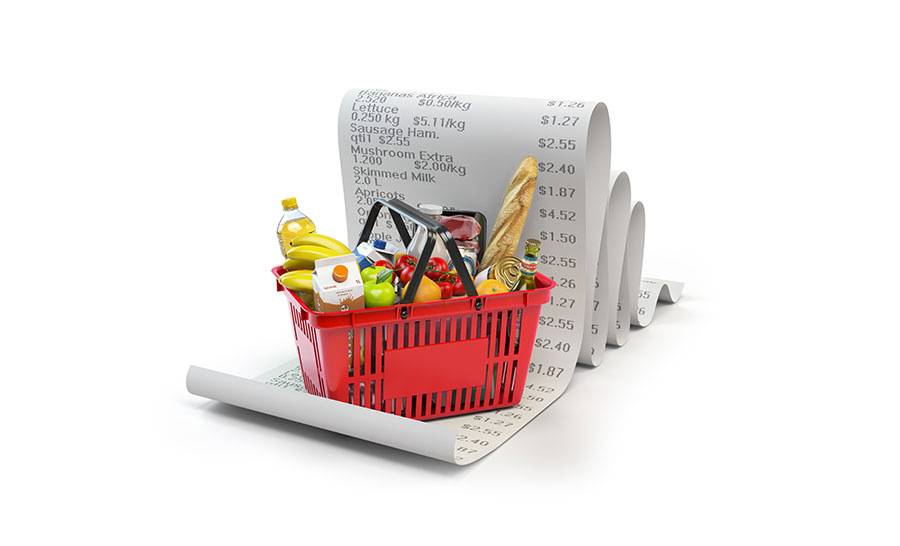Expensive or not?
Buying organic food is worth the cost.
Story: Adita Yrizarry-Lang
Health coaching is such an interesting profession. Most individuals are not ready to toss their unhealthy habits to the side. They create excuses, stories and even fallacies to justify their choices and then throw their arms up in the air when their weight or health doesn’t make a drastic change for the better. I’ve been a health coach for more than 30 years and I have heard it all with one common theme: how much is all of this organic food going to cost me?
Honestly, I never paid too much attention to what I was spending for the family. I rationalized it from the preventive medicine point of view and felt confident I was choosing the best foods for us and for our health. In the worst-case scenario, I knew I could cut corners by not buying as many fancy shoes as I used to. I simply prioritized quality foods and that was the most important thing to me.
Two years ago, life threw me a curve ball, and for the first time in years, I had to pay attention to my spending. This was the best test ever to see what I was spending on food for me and my two kids. I know food is fuel, and it’s important to me to offer the best fuel for my family. I knew I couldn’t be as frivolous with my spending, but I wasn’t sure where to start. After much deliberation, here is what I learned:

Make a plan for the week.
The old me used to buy just to buy. I had no real plan and with that came plenty of spoilage as the week went on. Now, I have set up a system and a menu for my week. I buy on a Sunday and by Friday, we have slim pickings left but just enough in the freezer to get me to Sunday once again; all of this with minimal spoilage and no unneeded extras.

Packaged foods.
These are typically the most expensive, not because each item is expensive, but because these items may or may not be used during the week. These are snacks, baking goods and, basically, fillers. Some will get eaten and some won’t. These are the things you buy just in case you have guests or because you are curious about how they taste. They bring along unneeded calories and an insufficient amount of nutrition. Unfortunately, it’s money not very well spent. (Right now, go take a look in your pantry to see how much stuff you have that is more than a month old. Next, add up those dollars and see where your money is being spent.)

Become creative.
I have never liked leftovers; it’s just a personal thing. The new me will accept them for the next day as long as I can create something that is tasty and different from the last meal. It’s a weird challenge I have given myself. Take last night’s chicken leftovers; today I have chopped and sautéed it with garlic, tomatoes, basil and a few other veggies. Then I tossed it all in with spaghetti squash—new meal with new flavors, while leaving nothing to waste.

And the grand total is ….
Keep in mind all my ingredients are organic and I choose animal proteins that are of the best quality as well. Here is a typical meal that I serve for me and my kids: a tray of organic, pasture-fed, free-range chicken, $7; freshly made black beans, $4; jasmine rice, $2; Brussels sprouts, $4; and miscellaneous veggies for cooking and flavor, $3. Feeding me and my two kids cost only $20 and this included a few leftovers. That is $6.67 each for a fully organic meal—not bad!
I challenge you to rethink buying organic. Many believe that it will break the bank with little return. Honestly, I much prefer organics than foods doused in bug spray and other chemical cocktails, not to mention the array of packaged foods that are sitting in the pantry. Most of these are unopened or partially opened; either way, they are dollars that are not being used for the best interest of the family. Take a moment to investigate your pantry and look at spoilage, expiration dates and unused items. This will give you a clearer picture of your family spending.
As you begin to reorganize yourself and your kitchen, think of your refrigerator this way: the refrigerator is for fresh items, so by the end of the week, it should look pretty empty. The freezer is a backup, so when the fridge goes empty, you still can create a great meal from the freezer. And the pantry is for seasonings, dry goods and packaged items that will be used during the week (FYI, the pantry should not be jammed pack. If so, please reevaluate).
Your family kitchen is the epicenter of health for the household. Remember, food is fuel. Choose foods that will empower the health of you and your family for a lifetime.
About the writer → Adita Yrizarry-Lang is author of “SuperPowers: A Busy Woman’s Guide to Health & Happiness” and “SuperPowers of the Family Kitchen.” She holds a degree in holistic nutrition and is a certified holistic lifestyle coach and health professional. Visit aditalang.com.

